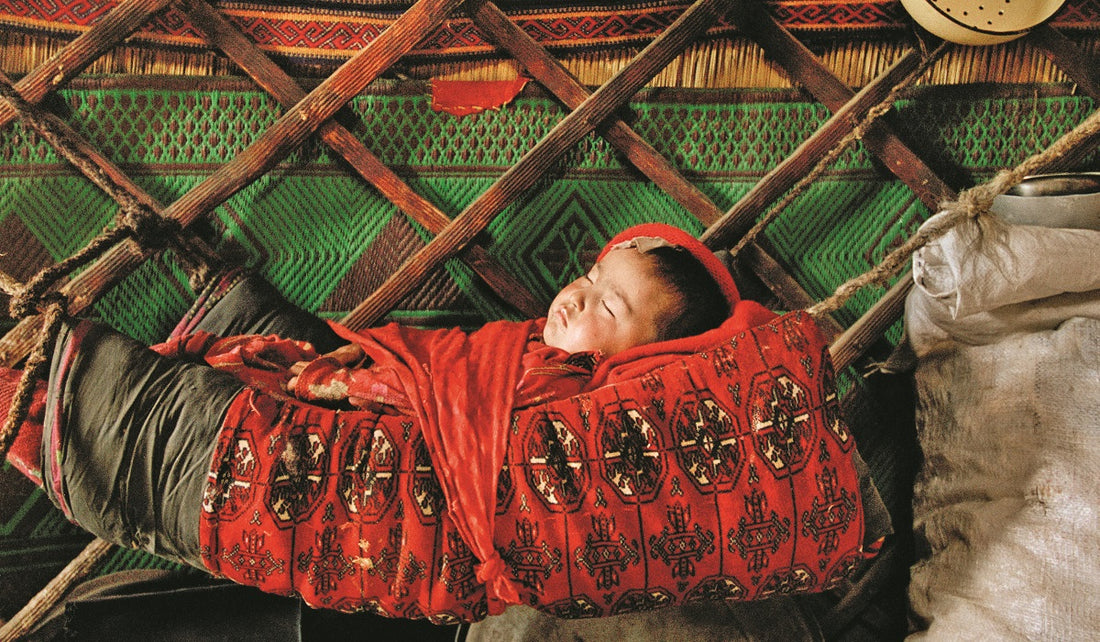
Kyrgyz of Afghanistan

All images: Matthieu Paley.
In Selvedge Issue 91 Luxe, we featured photography of an Afghan Kyrgyz group, taken by Matthieu Paley. Dr Stephanie Bunn, lecturer in Social Anthropology at the University of St Andrews and researcher into Central Asian felt textiles and basketry worldwide has provided a response to the piece, providing further historical context.
This particular group of Kyrgyz herders have probably been written about more than any other. First documented by Granada’s Disappearing World as The Kirghiz of Afghanistan (Charlie Nairn, 1975), then published by the Michauds’ in Caravans to Tartary (1978), and by Nazif Shahrani (1979), the Afghan Kyrgyz are a group of nomadic herders caught in their high mountain summer pastures between different political regimes.

They first fled to Afghanistan to escape Russian reprisals in 1916 and the 1917 Russian Revolution. Once in the high pastures of the Afghan Pamirs, new international boundaries with China and the Soviet Union blocked their usual migration routes, preventing them returning to their lower winter pastures where their animals could breed healthily, and they could live more easily. The group featured in Selvedge’s article now numbers around 2,000 people, all that are left after their former leader, Haji Rahman Qul, led most of them to Turkey between1978 and 1982, to avoid the Soviet invasion of Afghanistan.
Herding peoples such as the Kyrgyz have longstanding migration routes and pastures, between which each family travels each year. Spring and summer pastures may be at great distances from winter pastures and may indeed cross more recently created international boundaries, as in this case. Not to be able to migrate between seasonal pastures means this group have lived all year round in their former high-altitude summer pastures, wonderful in summer but intensely cold and damaging in winter, for decades.

Nomadic herders don’t ‘roam’ - such terms have been frequently used by conquerors to justify seizing land from them in the past, making such claims as ‘These people don’t own land, they just roam through it’. Every Kyrgyz herder knows whose lands, paths and pastures belong to whom. Their lands, at large, were also not shared, except between clan and family groups. To put up one’s boz üy (felt tent) on another clan’s land was an offense which could lead to reprisals, even war.
This way of life also includes a particular understanding of humans’ place within nature, a sense of balance and a view that humans are just one of nature’s many inhabitants. This notion of balance does impact on textile design, where patterns take on a positive and negative quality and reflect human perceptions of people’s relatedness with the wider environment. Most people you meet, however, would not necessarily feel in a position to say what the patterns mean. It is the same for the felt tent. While foreign historians and anthropologists have come up with all sorts of theories about why it is laid out as it is, my own experience of how people understood the special lay-out of the tent was not one of symbolism, so much as, “Even we do not fully understand this.”
Guest post by Dr Stephanie Bunn.
Stephanie collected and co-curated the first ever British Museum exhibition of Kyrgyz felt textiles, is author of Nomadic Felt (British Museum Press) and editor of Anthropology and Beauty (Routledge).
For more information about Stephanie’s research projects, visit www.st-andrews.ac.uk
